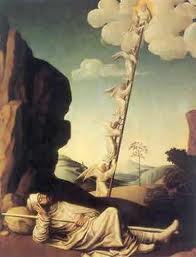 It’s more than a metaphor to say that Halloween is a time when our nightmares go on parade. The scary images, decorations, and costumes that take over the month of October have a direct psychological connection to the actual themes and patterns of people’s nightmares. If we look at current research on nightmares—who has them, what they’re about, what causes them—we can gain new insight into the unconscious creativity of our Halloween festivities.
It’s more than a metaphor to say that Halloween is a time when our nightmares go on parade. The scary images, decorations, and costumes that take over the month of October have a direct psychological connection to the actual themes and patterns of people’s nightmares. If we look at current research on nightmares—who has them, what they’re about, what causes them—we can gain new insight into the unconscious creativity of our Halloween festivities.
Who has nightmares? Numerous studies have reached the same conclusion: children are especially prone to nightmares, and so are women. Let’s start with age. The younger you are, the more likely you experience nightmares. Ernest Hartmann’s 1984 book The Nightmare notes the frequency of nightmares in children between the ages of 3 and 6, and he suggests that bad dreams may begin even earlier than this: “It is quite likely that nightmares can occur as early as dreams can occur; that is, probably late in the first year of life.”
The age factor shows up clearly in the nightmare patterns of adults. In a 2010 survey (available in the Sleep and Dream Database) in which 2,993 American adults answered a series of questions about sleep and dreams, the following are the percentages of people in different age groups who answered “Yes” to the question, “Have you ever had a dream of being chased or attacked?”
Chasing/Attack dreams, by age:
18-24: 71%
25-34: 65%
35-54: 59%
55-69: 48%
70+: 40%
Now for gender. Women tend to have more nightmares than men do, although how much more seems to vary during the life cycle. A meta-analysis by Michael Schredl and Iris Reinhard in 2011 found a striking pattern: similar frequencies of nightmares for males and females in childhood and old age, but a significantly higher frequency of nightmares for females during adolescence and adulthood. There seems to be a “nightmare bump” during women’s lives that elevates their frequency of bad dreams consistently higher than men’s. Is this nature or nurture? Probably both. A similar pattern appears in the 2010 SDDb survey cited above, when analyzed in terms of gender.
Chasing/Attack dreams for men, by age:
18-24: 68%
25-34: 63%
35-54: 56%
55-69: 47%
70+: 37%
Chasing/Attack dreams for women, by age:
18-24: 82%
25-34: 71%
35-54: 65%
55-69: 50%
70+: 46%
No matter how we explain these differences—more on that below—the basic pattern seems clear. Nightmares are especially frequent early in life, and especially for women during adolescence and young adulthood.
What do we have nightmares about? The most common content is fear, of course. And yet, what terrifies one person may have no emotional impact on someone else, so it’s difficult to generalize about the contents of nightmares. Still, it is possible to identify a few typical elements. In the SDDb, I selected four types of dream text (“bad dream,” “nightmare,” “nightmares,” “worst nightmare”), of 25+ words in length, which yielded a set of 423 dreams. I analyzed these 423 dreams using a word-search method with a template of 40 categories of content. I then compared the nightmare results to the results for the SDDb Baselines, a collection of more than 5,000 dreams representing ordinary patterns of dream content.
The dreams in the Baselines average about 100 words per report, while the 423 nightmares have an average length of only 65 words per report. This means the Baselines will tend to have higher frequencies on all categories. That’s actually helpful for our purposes, because it makes it easy to spot the categories that are unusually high in the nightmares (Baselines included in parentheses):
Fire: 4.7% (4.3%)
Air: 6.4% (4.4%)
Falling: 10.9% (8.3%)
Death: 18.4% (8%)
Fantastic beings: 10.4% (2.1%)
Physical aggression: 42.1% (17.6%)
Religion: 7.1% (6.7%)
Weapons: 9.9% (3.9%)
These are the categories of content that seem to be over-represented in nightmares, appearing more often in bad dreams than in ordinary dreams. They are also the themes that characterize pretty much every horror movie ever made, and countless video games, and, of course, many of the costumes and decorations of Halloween.
Why do we have nightmares? Psychologists have offered several theories about this. For Sigmund Freud, a nightmare is a failure of the sleeping mind to contain the instinctual desires aroused in dreaming. Similarly, the neurocognitive theory of Ross Levin and Tore Nielsen explains nightmares as a failure of emotional regulation during sleep. Carl Jung viewed nightmares as reflections of inner conflict, and thus potential revelations of insight and guidance. Antti Revonsuo’s “threat simulation theory” focuses on chasing nightmares and their potentially beneficial role in preparing the individual for similar threats in waking life.
The simple fact that nightmares are so common seems to be evidence against a theory of dreaming as a form of play (such as I propose). How can a frightening experience be playful? Actually, a theory of dreaming as play has a good explanation for the prevalence of nightmares. Research on play in animals and humans has found that play-fighting is one of the most common forms of play among social species like ours. Although it’s not “real” fighting, play-fighting does involve real aggression, threats, and negative emotions, and it seems to have a valuable rehearsal/preparatory function similar to other forms of play. Paradoxically, play-fighting can also promote social bonding by creating a safe arena to work through interpersonal tensions.
This brings us back to the connection between nightmares and Halloween. Seen in this light, the many little rituals of Halloween are ways of playing with our nightmares, welcoming them into waking awareness, sharing them with others, and celebrating their wild creative energies. Once each year, we invite these energies into the community as a way of enlivening and strengthening our collective bonds, at a time when daylight is waning and the nights are growing colder. This is the psychological wisdom of Halloween, infusing us with a playful burst of unconscious vitality just as we’re preparing to survive through the coming darkness.
Note: this post first appeared in Psychology Today on October 21, 2021.

